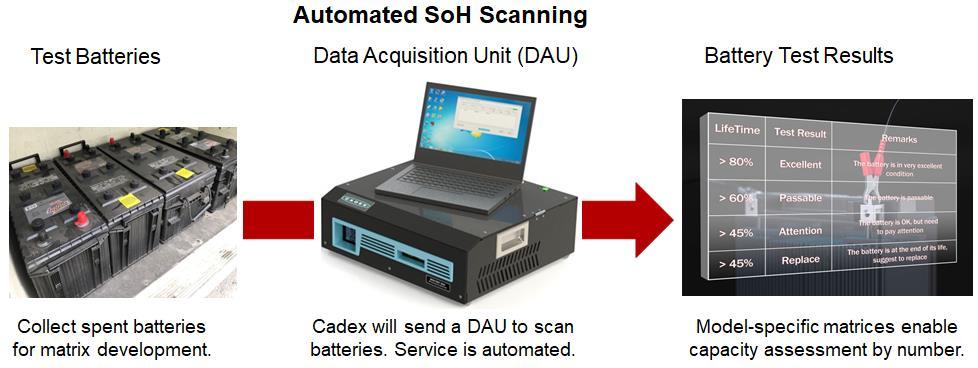Nov 2023 - Article
Spectro™ was developed to test starter batteries in cars; however, the full potential of this advanced technology will not be fully utilized in automotive alone. The consumer auto market is crowded with low-cost battery testers that only check the battery on sufficient power to crank the engine. Meanwhile, most batteries fail due to capacity fade, an aging effect that goes mostly unnoticed by the driver and cannot be identified by a power check. On a pass, Spectro™ will give a grace period based on capacity reserve while low capacity will correctly fail a battery even if cranking is still strong.
We are also developing the X-Metrix to test large batteries for trucks and buses. This application is promising because the Spectro™ test is non-invasive while rival units apply a high discharge currents pulse that becomes impractical and loses accuracy when testing large batteries.
Spectro will also test and monitor deep-cycle batteries in UPS. This requires a model-specific matrix that we build by asking interested parties to reserve batteries as they come off service. We then send the Data Acquisition Unit (DAU) to scan these batteries on-site as illustrated in Figure 1. The test that is performed automatically includes battery preparation (BattPrep), capacity measurement with a full cycle and reading the electrochemical evidence by a frequency scan to produce Nyquist signatures.

Figure 1: Scanning is done off-site when batteries reach end of service
| Building a model-specific matrix requires at least 12 valid Nyquist scans. The battery pool must include same-model batteries in various SoH conditions. An analogy is pillars supporting a bridge representing even capacity distribution. Each battery will receive its own model-specific matrix made available on the Matrix Library by Internet. |  Figure 2: A mature matrix resembles a bridge with many pillars |
Cloud Analytics as shown in Figure 3 assesses battery capacity with a model-specific matrix. To test, the service technician scans the QR code placed on the field battery that automatically downloads the matrix into the Spectro device to prepare for testing. The test results are stored in the Cadex Cloud for comparison with previous readings to estimate the Remaining Useful Life (RUL) of the battery.

Figure 3: Cloud Analytics fetches model-specific matrix from the Matrix Library to test battery
Much of the Cloud Analytics is ready for the market, and we have several DAU’s to send out to battery users wanting to adopt Cloud Analytics. Our focus is on populating the Matrix Library which we will make available globally via the Internet for a small fee.
Cloud Analytics will not be limited to automotive and stationary applications but will also support smart batteries for portable uses when servicing with Universal Supervisor Charger (USC). Electrification calls for battery users to know the Minimal Operational Reserve Energy (MORE) as capacity gradually fades. Cadex is pioneering in modern battery diagnostics to fully utilize each battery and schedule replacement while the battery is still
fully operational.
